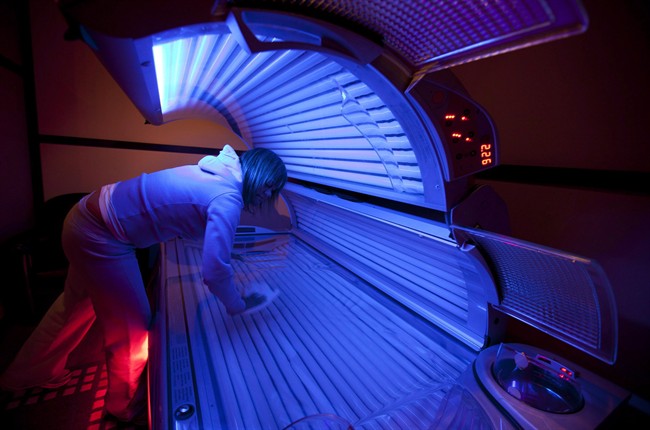TORONTO – You can tell them they’re risking their health to get that golden glow, but tanning bed aficionados will still head to the salon for their weekly dose. New research suggests an addiction may be at play.

American researchers say that the ultraviolet radiation that helps the skin bronze may also trigger the release of a hefty dose of endorphins, the feel-good chemicals that can come from sex, drugs and exercise.
For their study, Massachusetts General Hospital scientists sought to understand why it’s been so hard to dissuade consumers from using tanning beds. There are public service announcements, campaigns and studies that have all outlined the link to skin cancer, yet frequent tanners aren’t phased.
Talk to tanning bed regulars and they’ll tell you anecdotally: the warmth, the results and the relaxation make them feel great.
READ MORE: FDA requires warning labels, safety measures for indoor tanning
The new research is based on mice that had their backs shaved: each day for six weeks, the researchers gave the animals a daily dose of UV light that’s equal to about 20 to 30 minutes of midday Florida sun.
That dose was enough to induce tanning but not enough to burn the animals’ skin. Within a week of tanning, the mice had “significantly” higher endorphin levels that kept climbing as the study progressed.
They became less responsive to light touch or temperature changes than a control group of mice that hadn’t had sun exposure. The higher the endorphin levels spiked, the less sensitive they became. The exposure was even enough to blunt pain in the mice.
And once they were weaned off the sunlight, the withdrawal symptoms set in: trembling, shaking, and teeth chattering.
- Life in the forest: How Stanley Park’s longest resident survived a changing landscape
- ‘Love at first sight’: Snow leopard at Toronto Zoo pregnant for 1st time
- Buzz kill? Gen Z less interested in coffee than older Canadians, survey shows
- Carbon rebate labelling in bank deposits fuelling confusion, minister says
READ MORE: Canadian skin cancer rates not a cancer success story
The researchers suggest that release of endorphins may be what’s hooking consumers to tanning, the same way that drugs and other vices become addictive as the feel-good chemicals hit the brain’s reward regions.
And they’re most concerned about young consumers.
“Teenagers can walk in and easily have tanning bed exposure. Many package deals are inexpensive in the beginning. Companies seem to have learned from experience that tanning has a propensity to be addictive. So it’s the perfect business model,” study co-author, Dr. David Fisher, told NBC News.
In 2011, Dr. Bryon Adinoff, a University of Texas psychiatrist, studied brain activity in frequent tanners. He found that UV light tapped the reward centres in the brain.
“This supports the idea that UV exposure is rewarding to the brain, and could have potential for addiction,” Adinoff told CBS News.
READ MORE: Tanning bed ban for youth possible
In other research, tanning bed regulars could even tell the difference between beds that delivered UV light and those that didn’t.
And then, of course, the sun is also a source of vitamin D – critical in helping our bodies absorb and use calcium and phosphorous for strong bones and teeth, according to the Dietitians of Canada. But that doesn’t give you a free ticket to go tanning.
Vitamin D can be found in egg yolks, pork, salmon and other seafood and grain products, the organization’s website says.
Fisher’s full findings were published in the journal Cell.
carmen.chai@globalnews.ca
Follow @Carmen_Chai




Comments